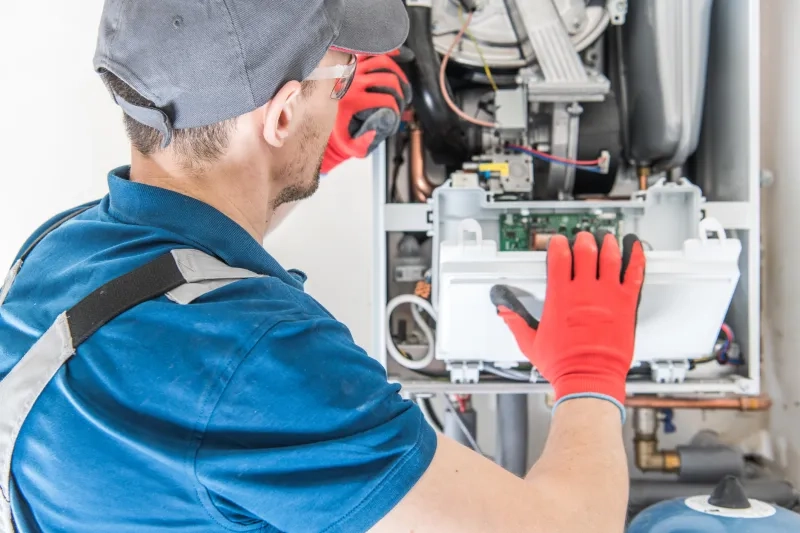
Want peace of mind this winter? Prepare your furnace in the fall
3 Minute Read
Picture this: it’s the first cold snap of the season, so you turn on your furnace and wait for your home to heat up. But instead of warm air, it’s an acrid smell and curls of smoke that come through the vents. Rather than relaxing in a cozy space, you’re now stuck on the phone with a repair company, shivering until a professional can fix your furnace.
According to the Ontario Association of Fire Chiefs, heating equipment is the number one cause of home fire-related deaths, with half of these occurring in December, January and February. Furnaces also accounted for 6.4 per cent of carbon monoxide poisonings in Canada between 2011 and 2023.
All of this is easily avoidable. With proper care and preventative maintenance, you can protect yourself and your home from tragedy.
Take action before you need your furnace

Although you likely won’t be using your furnace until the winter months, early fall or even late summer are the best times to inspect your furnace. If you wait to test it until you actually need it, you risk breakdowns, fires and carbon monoxide leaks when you need your heating system the most.
If you prepare for the cooler season ahead, not only will your furnace be safer, but it will also work more efficiently and cost you less on your monthly energy bill. Planning ahead also means faster turnaround times for professional service, since repair people will be in the highest demand once the weather cools.
What to look out for

First and foremost, book a professional inspection annually to ensure everything is in working order. Obstructions can build up and potentially cause fires, so you’ll want an expert to check that nothing is blocking the ducts.
You can inspect the vents in your home yourself, ensuring everything is clear for proper airflow throughout the space. Vacuum up debris, reposition furniture if the vents are covered and buy a new grate if yours is broken or ill-fitting. The area around your furnace should also be clear of obstructions. Never lean anything against your furnace, and ensure everything is stored more than three feet away from the appliance.
Replace your furnace filters every one to three months for efficiency and best air quality. You can do this yourself—just pick up a filter from the hardware store. Ensure you purchase the correct size, as different furnaces require specific specifications. Additionally, change the filter more frequently if you have allergies or pets in the home. Before you actually need your furnace, turn it on and pay attention to any unusual noises or smells. If anything is out of the ordinary, call a professional.
While some thermostats are wired into the home, others are battery-operated. Replace the batteries if needed and check that the temperature readings are correct using a reliable thermometer. Looking for an upgrade? Smart thermostats are widely available, and many have alerts for furnace failure, sudden drops in temperature and other signs that something is wrong with your heating and cooling system. These high-tech solutions also have the added benefit of saving you money on your monthly bill, as they can adapt to your habits and keep your home energy efficient.
You should also test your smoke and carbon monoxide detectors every month and change the batteries regularly. Carbon monoxide is colourless and odourless, so a household detector is your best defence against leaks that will cause you harm. You should have a detector on every level of your home, especially near sleeping areas.
In general, reach out to a professional if something is amiss. Maintenance is the key to keeping your home warm and safe all winter long, so don’t wait—get a head start and prepare your furnace before the weather turns.
Be proactive
Planning ahead and anticipating potential risk is the best way to protect your living space. Just like preventative maintenance, home insurance¹ is another way to give you peace of mind and keep your property safe before disaster strikes.
*This advice is intended to provide general information only. It isn’t intended to provide legal or professional advice or to be relied on in any dispute, claim, action, demand or proceeding. CAA Insurance Company doesn’t accept liability for any damage or injury resulting from reliance on this information.
1 Property Insurance is underwritten by CAA Insurance Company. Certain conditions, limitations and underwriting guidelines apply.




